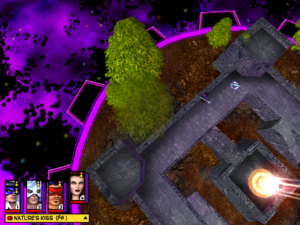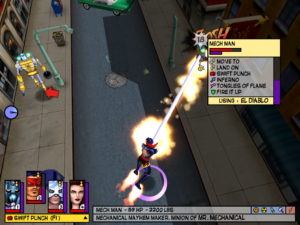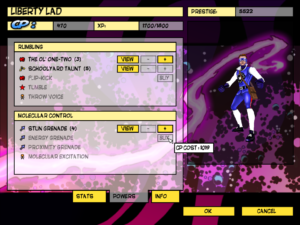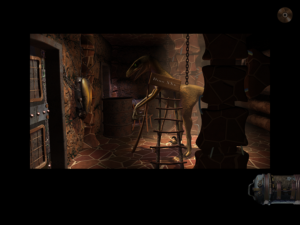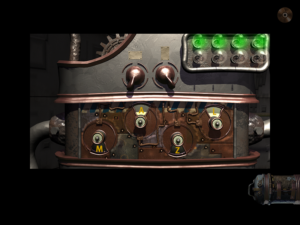WarioWare, Inc.: Mega Microgame$!
WarioWare, Inc. is a collection of “microgames”. In fact, it’s the collection of microgames. I’ve seen things like this before, mostly in Flash on the web, which seems like a more natural environment for this kind of simple, disposable stuff than a solid-state cartridge sold in a box. But apparently WarioWare is the pioneer that these other games are imitating, and that makes it interesting to me. The idea of a pared-down minigame with distinct mechanics embedded in a larger work (usually as a bonus round of some kind) is something that’s been around for pretty much as long as there have been larger works to embed them in, but the creators of WarioWare were bold enough to ask if a viable game could be made entirely out of such pieces. (It seems like questions of the form “Can a viable game be made entirely out of [game element]?” are almost always answerable in the affirmative. See also the entire “Hidden Object” genre.)
So, what are microgames? Essentially, the atoms of interactivity that games are built from, isolated from context and limited in duration to a few seconds at most. A few seconds doesn’t sound like much, but it feels more comfortable than I was anticipating: the transitions are never sudden or unexpected, there’s always a bit of padding between microgames (an animation that tells you if you succeeded or lost), and when you come right down to it, all that any microgame asks of you is that you perform one essential action, one verb as it were, and few seconds is plenty of time to do that (or fail to do it). Some of the games in WarioWare are as simple as pressing a button at the right time — a fairly large proportion of them, in fact, although it’s dressed up in all sorts of ways, from sports to space battle to nose-picking. Others are more complicated, and involve aiming, dodging, or steering in various ways. Some are things that could have been sold as full games by themselves in an earlier era. Heck, some were.
In the main game mode, you’re thrown into a series of randomly-selected microgames, usually with a single word of instruction, like “Dodge!” or “Decide!” or “Potato!”, and have to try to figure out from that and what’s on the screen exactly what you have to do. To help you out, the controls are limited to the D-pad and a single button. If that isn’t enough, you can get fuller instructions for any microgame you’ve encountered by switching over to “grid” mode, which also lets you play single microgame types without the random switching. This is fundamentally less appealing to me. If you know what you’re getting, you lose the “think fast” factor, the rapid switching of gears that’s more fundamental to the game as a whole than the specific microgame contents. As you progress through a level, the pace picks up, becomes frenzied in a sort of Riddler mind-control way, the music speeding up until it doesn’t sound like music any more. It’s a twitch game, really, where you learn to react instantly to the stimulus of specific microgame screens.
 Comments(1)
Comments(1)